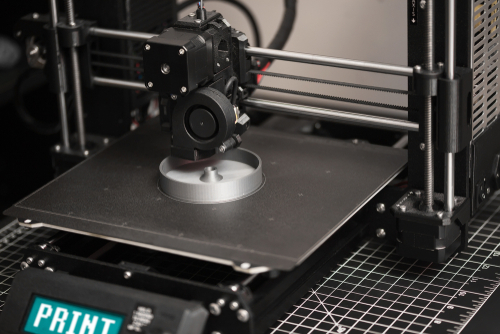The Impact of 3D Printing on Steel Fabrication Processes
March 29, 2024 2:12 pm Leave your thoughtsSteel fabrication is a crucial industry that plays a significant role in the construction, manufacturing, and transportation sectors. Traditionally, steel fabrication processes have been labor-intensive and time-consuming, often involving complex machinery and skilled workers. However, the emergence of 3D printing technology has revolutionized the way steel components are manufactured, offering new possibilities for efficiency, customization, and cost-effectiveness. In this blog post, we will explore the impact of 3D printing on steel fabrication processes and how it is reshaping the industry.
Introduction to 3D Printing in Steel Fabrication
3D printing, also known as additive manufacturing, is a process that creates three-dimensional objects by layering material based on a digital model. While 3D printing has been widely used in industries like aerospace, automotive, and healthcare, its application in steel fabrication has been more recent. By using powdered steel and a laser or electron beam to fuse the material layer by layer, 3D printers can create complex and intricate steel components with high precision and accuracy.
Benefits of 3D Printing in Steel Fabrication
One of the primary advantages of 3D printing in steel fabrication is the ability to create highly customized and complex components that would be challenging or impossible to produce using traditional methods. This level of customization allows for improved design flexibility and innovation, making it possible to manufacture intricate geometries, lightweight structures, and optimized parts. Additionally, 3D printing enables quicker prototyping and iteration, reducing lead times and costs associated with traditional manufacturing processes.
Another benefit of 3D printing in steel fabrication is the reduction of material waste. Traditional machining processes often result in significant material waste due to the need for cutting and shaping raw materials. In contrast, 3D printing is an additive process that only uses the necessary amount of material to create the desired part, minimizing waste and maximizing material efficiency. This not only contributes to cost savings but also aligns with sustainability goals by reducing environmental impact.
Moreover, 3D printing offers improved efficiency in steel fabrication by streamlining production processes and reducing the need for multiple machining steps. Complex parts that previously required assembly from multiple components can now be printed in a single piece, eliminating the need for welding, fastening, or other joining techniques. This simplification of manufacturing processes can lead to faster production times, reduced labor costs, and enhanced overall productivity.
Challenges and Considerations in 3D Printing Steel Components
While 3D printing has revolutionized steel fabrication processes, it is not without its challenges and limitations. One of the main considerations in 3D printing steel components is the material properties and quality of the final product. The mechanical properties of 3D-printed steel parts may differ from traditionally manufactured steel, requiring thorough testing and validation to ensure performance and durability.
Additionally, post-processing steps such as heat treatment, surface finishing, and machining may be required to achieve the desired properties and surface quality of 3D-printed steel components. These additional processes can add complexity and cost to the overall production workflow, highlighting the importance of considering the entire manufacturing process when implementing 3D printing in steel fabrication.
Another challenge in 3D printing steel components is the size limitations of current 3D printers. While advances in technology have enabled larger build volumes and faster printing speeds, there are still constraints on the size and scale of components that can be produced using 3D printing. Large-scale steel structures or components may require specialized equipment and techniques to achieve the desired size and quality.
Future Trends and Opportunities in 3D Printing Steel Fabrication
Looking ahead, the future of 3D printing in steel fabrication holds great promise for continued innovation and advancement. As technology improves and materials science evolves, we can expect to see increased adoption of 3D printing in the manufacturing of complex steel components for various industries. The integration of artificial intelligence, robotics, and automation in 3D printing processes will further enhance efficiency, accuracy, and scalability.
Additionally, advancements in material development, such as the use of advanced alloys, composites, and hybrid materials, will expand the possibilities for 3D printing steel components with enhanced mechanical properties and performance. By combining the benefits of customization, efficiency, and sustainability, 3D printing has the potential to reshape the steel fabrication industry and drive new opportunities for innovation and growth.
Summary
The impact of 3D printing on steel fabrication processes is profound, offering a wide range of benefits and opportunities for manufacturers, designers, and engineers. While challenges and considerations exist, the advantages of customization, efficiency, and material efficiency make 3D printing a valuable tool for creating complex steel components with precision and quality. As technology continues to evolve and industries embrace the capabilities of additive manufacturing, we can expect to see 3D printing play an increasingly important role in shaping the future of steel fabrication.
Need a Steel Construction Company in Terre Haute, IN?
Benchmark Fabricated Steel is a premium service provider for all your metal and steel needs since 1971. We offer an array of services and products for commercial, business, and corporation work. Our fully trained team is available for project design, erect drawings, site construction, product procurement and delivery, engineering and consulting, and much more. Benchmark Fabricated Steel is fully accredited by the AISC and the Canadian welding association allowing for the highest quality product to be produced. Our business is also recognized by the Chamber of Commerce and is a fully certified fabricator. All of our products are manufactured by the highest quality of equipment, with an expert and knowledgeable staff. Contact us today to learn more about what we can do for you!
Categorised in: Steel Fabrication
This post was written by admin

